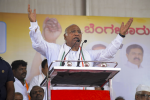
Withdrawal of Chinese troops in Hot Springs complete; pull back continues in other areas
PTI, Jul 9, 2020, 8:16 AM IST

The Chinese military removed all temporary structures and completed the withdrawal of its troops from the face-off site in Hot Springs in eastern Ladakh on Wednesday even as the Indian Army kept a close watch on the pullback and maintained a high level of combat readiness in the region, people familiar with the developments said.
They said the two armies are expected to carry out a joint verification in the next few days to assess the implementation of the disengagement process once the dismantling of the temporary infrastructure and withdrawal of troops by China are completed at the friction points along the Line of Actual Control(LAC) in eastern Ladakh.
There has been thinning out of troops from Finger areas in Pangong Tso as well, they said. Pangong Tso has been a major face-off site between the two sides.
“The two militaries are set to hold extensive talks on finalizing modalities for restoring normalcy and bringing back peace and tranquility in the region after the verification of the disengagement exercise is completed,” they said.
The disengagement process began on Monday morning after a nearly two-hour telephonic conversation between National Security Advisor Ajit Doval and Chinese Foreign Minister Wang Yi on Sunday.
At the talks, the two sides agreed on an expeditious withdrawal of troops from all the standoff points to bring back peace and tranquility in the region. Doval and Wang are special representatives (SR) for the boundary talks.
Following the talks, a mutual disengagement process kicked off in Galwan Valley, Hot Springs, Gogra, and in Finger areas in Pangong Tso. It is learned that the mutual disengagement in Gogra (patrolling point 17A) is expected to be completed by Thursday.
Gogra and Hot Springs are among the key friction points where the two armies were locked in an eyeball-to-eyeball situation for the last eight weeks.
Military sources said the Indian Army will continue to maintain its aggressive posturing along the LAC till the Chinese side cuts down on its significant buildup in its rear bases.
Both sides brought in thousands of additional troops and weaponry, including tanks and artillery guns, to their rear bases following the face-off that began on May 5.
“There is a trust factor now. We will not lower our guard at all,” said a senior military official on the condition of anonymity.
As per the decisions arrived at corps commander-level talks on June 30, the two sides would create a minimum buffer zone of three kilometres in most of the areas where they were engaged in a standoff.
Government sources said the Chinese military has already removed tents and withdrew its personnel from patrolling point 14 in Galwan Valley, the site of violent clashes between the two armies on June 15 that left 20 Indian soldiers dead.
The Chinese side also suffered casualties but it is yet to give out the details. According to an American intelligence report, the number of casualties on the Chinese side was 35.
The tension between the two sides escalated manifold after the Galwan Valley clashes.
Both sides held several rounds of diplomatic and military talks to ease tension in the region but there was no visible sign of any end to the standoff till Sunday evening. Sources said the breakthrough was achieved at the Doval-Wang meeting.
On June 30, the Indian and Chinese armies had held the third round of Lt Generallevel talks during which both sides agreed on an “expeditious, phased and stepwise” de-escalation as a “priority” to end the standoff.
The first round of the Lt General talks was held on June 6 during which both sides finalized an agreement to disengage gradually from all the standoff points beginning with Galwan Valley.
However, the situation deteriorated following the Galwan Valley clashes as the two sides significantly bolstered their deployments in most areas along the LAC.
On Friday, Prime Minister Narendra Modi made a surprise visit to Ladakh during which he said the era of expansionism is over and that the history is proof that “expansionists” have either lost or perished, in comments which were seen as a clear message to China that India is not going to back off and would deal with the situation with a firm hand.
Tensions had escalated in eastern Ladakh around two months back after around 250 Chinese and Indian soldiers were engaged in a violent face-off on May 5 and 6. The incident in Pangong Tso was followed by a similar incident in north Sikkim on May 9.
Udayavani is now on Telegram. Click here to join our channel and stay updated with the latest news.
Top News
Related Articles More

Can’t control elections or pass directions on basis of suspicion: SC tells EVM critics

Not shying away from dealing with stray dogs issue but will not allow scope to be expanded, says SC

Delhi: Man standing atop truck dies after his head hits metro station beam

Bullet train project completion date rests on award of all tenders, says Railways in RTI reply

What ‘nyay’ Cong can do, when its councillor’s daughter in K’taka doesn’t get justice: Thakur
MUST WATCH
Latest Additions

WATCH: 5 runaway military horses cause mayhem in London

FIR filed over BJP’s social media post allegedly promoting hatred and enmity: EC

Can’t control elections or pass directions on basis of suspicion: SC tells EVM critics

Amitabh Bachchan receives Lata Deenanath Mangeshkar Puraskar

Hubballi: Congress leader Randeep Surjewala visits Neha’s house, assures justice to family
























